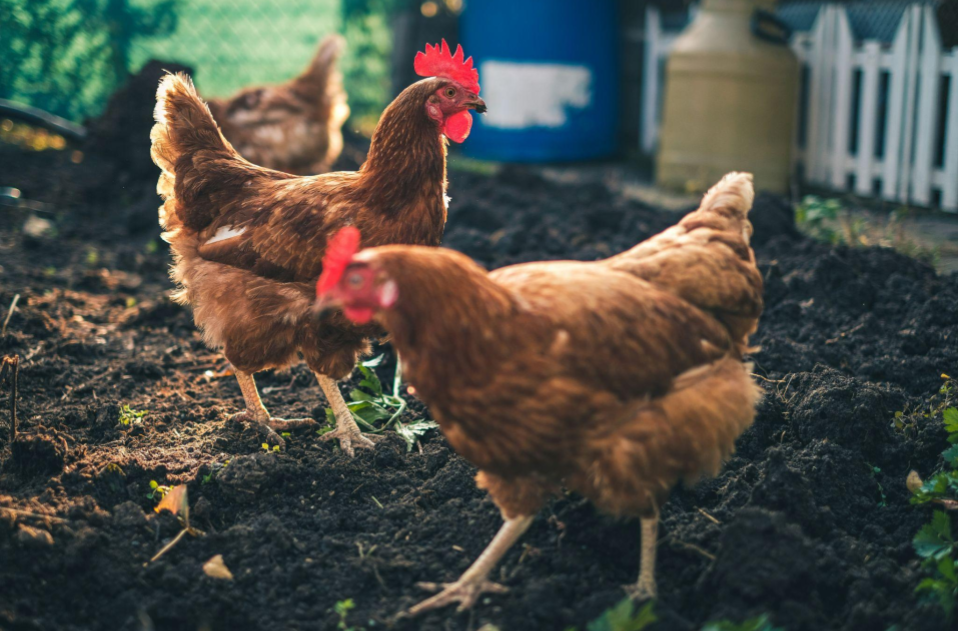The Poultry Farmer
Once upon a time, not so long ago, a farmer kept some chickens. So many chickens that they were kept in four large chicken runs, each with a hundred chickens. While some hens laid lots of eggs and some only a few, the farmer collected more or less the same number of eggs from each of the four hen coops.
One day a great rumbling sound came from the south west and a mountain grew tall and dark. So big it was that it cast a long shadow in the early evening. One of the chicken runs was unaffected by the shortened days but each of the other three were, in increasing amounts.
After a while the farmer started to notice something. The number of eggs each chicken run produced became different. The one most in shadow, produced the fewest eggs. The next chicken run laid the next fewest & so on. Only the run unaffected by shadow was the same as before.
Hard times fell on the farmer and he couldn’t afford to feed all the hens. He could only afford to keep one hundred, so for a whole week he counted the eggs from every chicken. He kept all the hens that laid at least five eggs and let the rest go to fend for themselves in the surrounding countryside. He was happy and didn’t really care that forty hens came from the sunniest chicken run and only ten from the shadiest. He didn’t bother to share them more evenly between the coops as sometimes he could be a bit lazy.

Photo by Jan Baborák on Unsplash
Time passed and not much happened with the hens. The farmer kept feeding them and the hens kept laying eggs. However sometimes, if a hen started only laying an egg or two a week, he let them go to join the others in the surrounding countryside.
It was during this time that the mountain began to crumble. It was made of weak rock. It quickly weathered until one day the mountain finally cast no shadow at all over the farm.
The farmer took stock. To his complete surprise he discovered an amazing thing and immediately went around to all the other farmers to tell them about it. The other farmers were equally amazed and started to look for the amazing thing within their dairy herds, sheep flocks and even down in the smelly old pig styes.
What did the farmer find?
He noticed that even though he still had different numbers in each of the chicken runs, by comparing the average number of eggs for each hen of the original one hundred, it was the chickens in the shadiest run that laid the most eggs. Many more in fact, on average, than the chickens that had been in the sunniest run.
Oh my God he thought, how did this happen?
Well, the farmer knew a thing or two about chickens. He’d kept chickens before. One of the things he knew was that they liked to flock together, so he came up with a convincing idea. He thought that the hens that started off with only ten in the coop were now better layers, on average, as they had found a way to deal with less flocking, in fact a no flocking way, if you will.
The farmer didn’t need to think about what had happened to the sunniest chicken run or indeed any of the other hen coops. He had the answer. He was so confident in his idea that he wrote it down and sent a letter to all the other farmers in the area. They were equally convinced and became busy finding similar results on their farms and were all too happy to use the farmer’s idea to explain why.
The farmer’s wife, who looked after all their money, had watched all the goings on and was somewhat perplexed. She often collected the eggs herself and noticed more about the hens than the farmer did. He often went around staring at the clouds, seeing things that just weren’t there.
When the farmer selected the ‘best’ one hundred hens she noticed three things. One, that he chose most of the heaviest layers in all of the coops, the hens that would lay every day, seven days a week. Also she noticed that he chose hens from the sunniest coop who only laid five eggs a week and that he chose a lot of these. She thought most of the forty from this coop only laid five eggs a week, whereas nearly all the smaller shadiest coop hens were better layers.
Over time as the mountain crumbled she also noticed it was the five eggs per week layers that the farmer cast out onto the road. Most of them were cast out from the sunniest coop and maybe only one of two from the shadiest coop.
The farmer’s wife wasn’t surprised at all when the farmer took stock and calculated the average number of eggs for each hen from the original one hundred. That the smaller shadiest group was far better than the much larger sunniest group was simply something she expected.